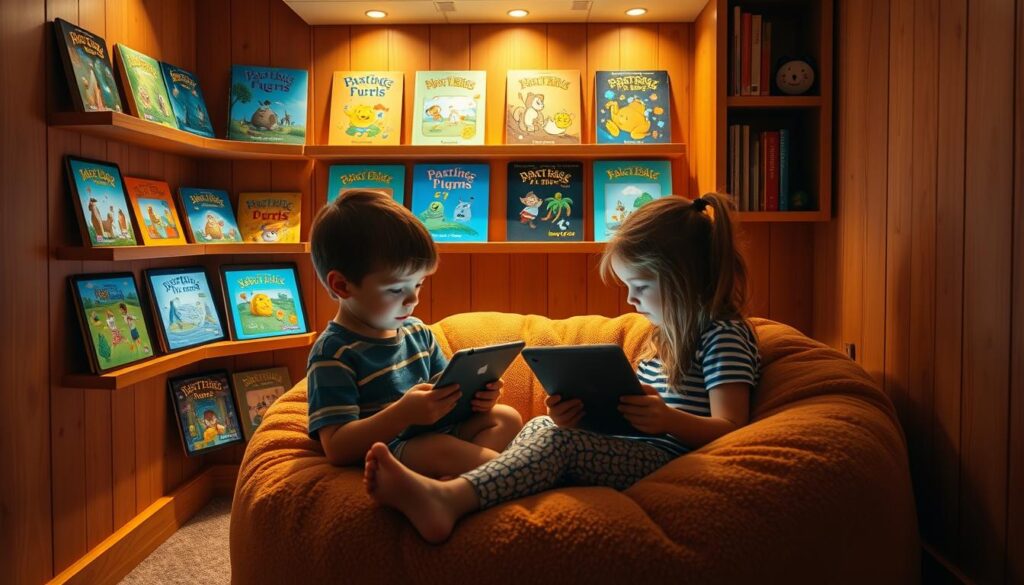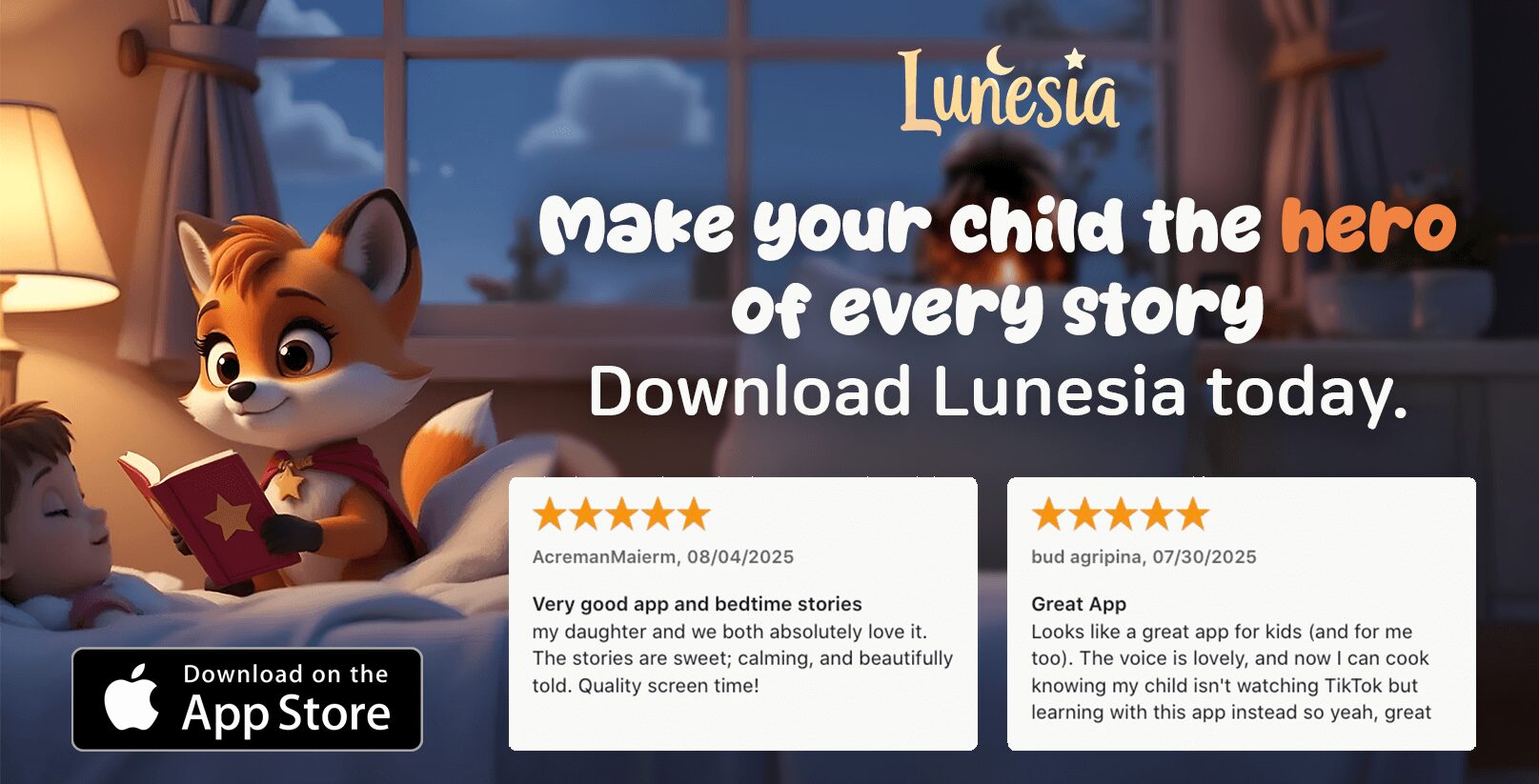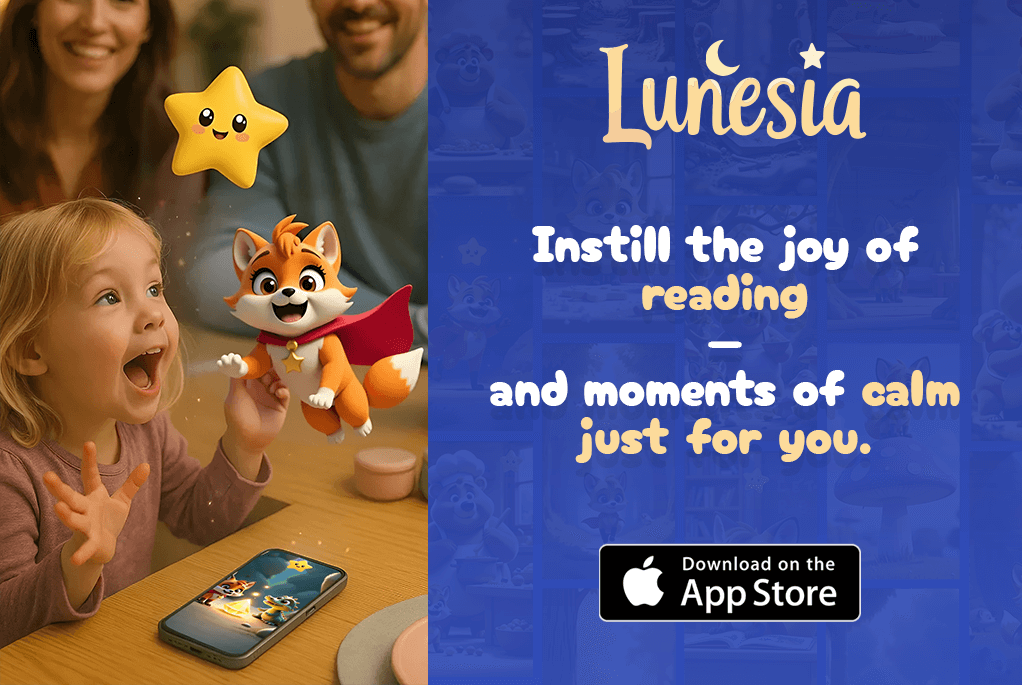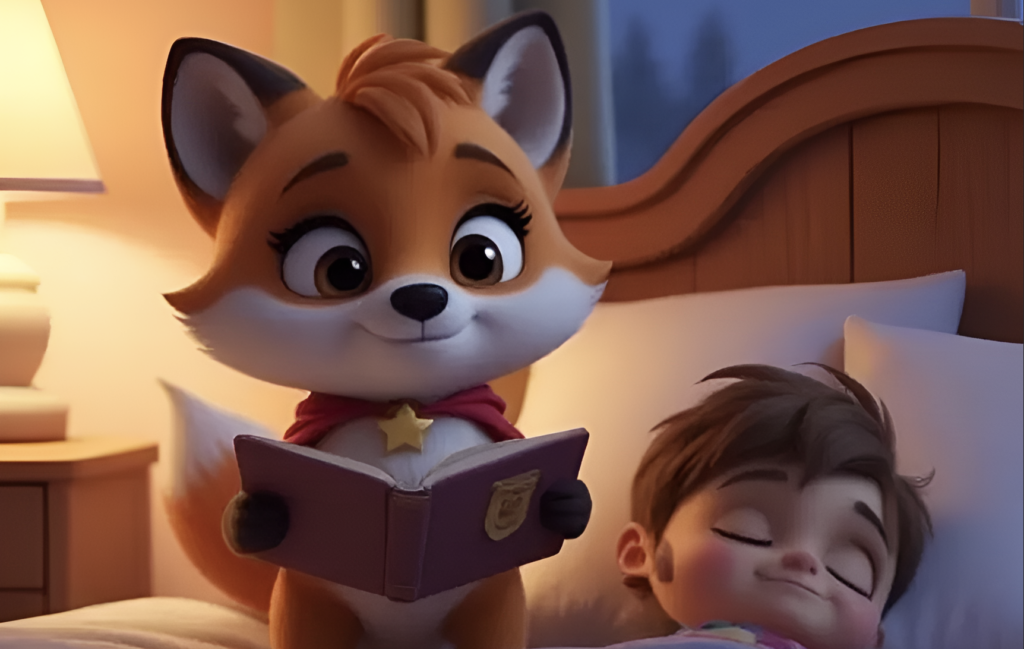As a mom of a reluctant reader, I’ve explored numerous digital reading solutions to engage my child. Two apps that stand out for their innovative approaches are Bookful and Lunesia. While both aim to transform traditional reading experiences, they take different paths.
Bookful uses AR-enhanced visuals, whereas Lunesia focuses on choice-driven narratives. Understanding their strengths can help parents make the right choice for their family.
Both apps cater to different learning styles and age groups, making it essential to explore their unique features. By doing so, parents can determine which app better suits their child’s needs and interests, ultimately fostering a love for reading.
Understanding Digital Reading Apps for Children
With the rise of digital reading tools, parents now have more options than ever to encourage their kids to develop a love for reading. Digital reading apps have revolutionized the way children interact with stories, creating immersive experiences that blend traditional reading with interactive elements tailored to different age groups and reading levels.
Bookful: AR-Enhanced Reading Experience
Bookful brings books to life through augmented reality (AR), allowing characters to literally jump off the page in 3D. This makes it particularly appealing for visual learners and reluctant readers who need extra engagement. Kids can choose from two modes — read or play — making it an entertaining experience.
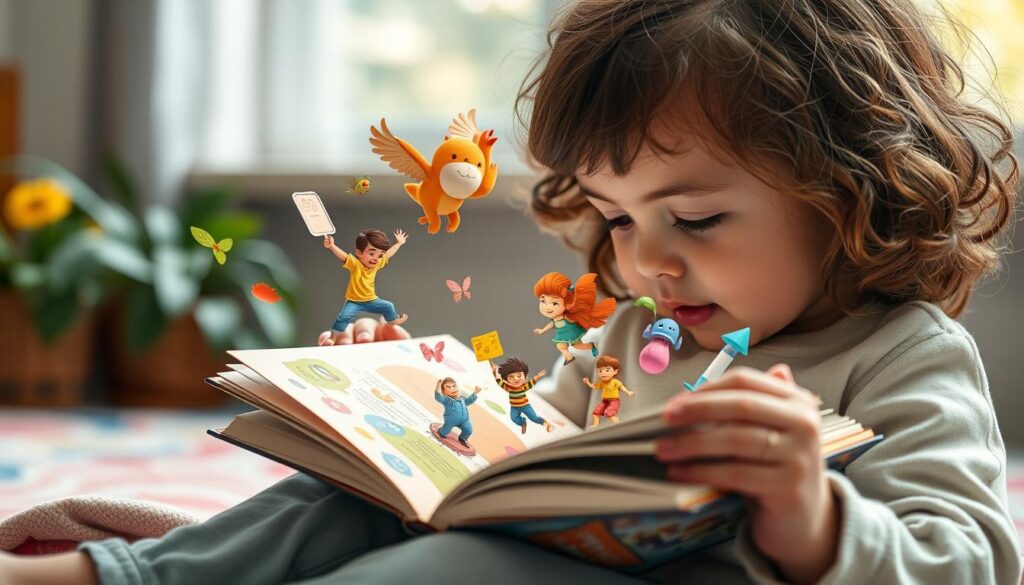
Lunesia: Choice-Driven Interactive Narratives
Lunesia takes a different approach by focusing on choice-driven narratives where readers make decisions that affect story outcomes. This interactive storytelling format helps develop decision-making skills and critical thinking as kids explore different narrative paths.
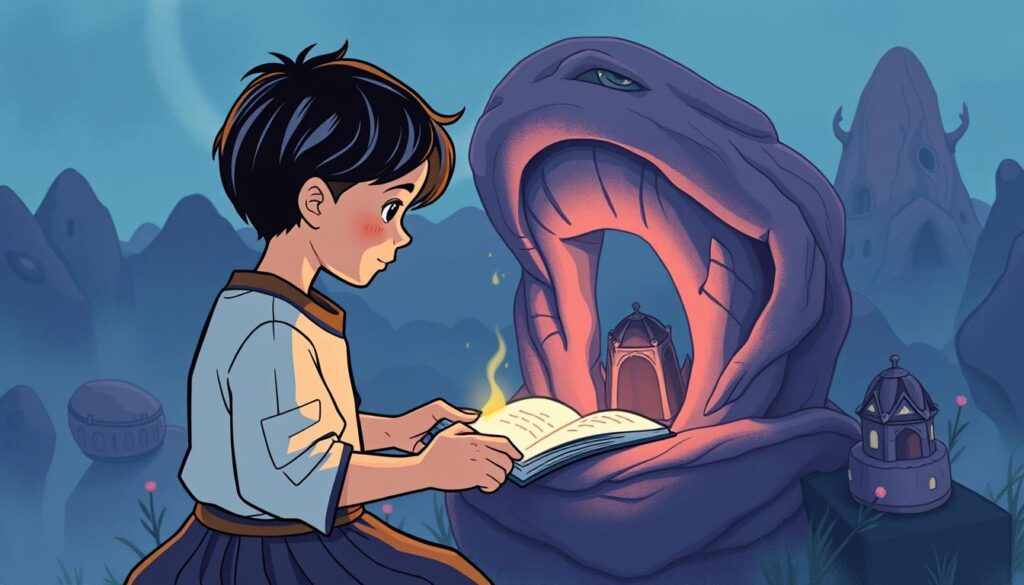
The Growing Importance of Digital Reading Tools
Both Bookful and Lunesia represent the growing importance of digital reading tools that meet kids where they are — in a digital world — while still developing crucial reading skills and literacy. These modern reading approaches can be particularly valuable for reluctant readers who might otherwise avoid books entirely.
Bookful vs Lunesia: Feature Comparison
To determine which app is best suited for your child, let’s dive into a detailed comparison of Bookful and Lunesia’s features. This comparison will cover content library, interactive elements, educational value, user interface, and pricing structure.
Content Library and Story Selection
Bookful offers a diverse library that includes both classic children’s fiction titles, such as Peter Rabbit, and educational nonfiction titles about dinosaurs and science. In contrast, Lunesia focuses more on original interactive stories with multiple possible outcomes. When choosing between the two, consider the type of content your child engages with most.
Interactive Elements and Technology
Bookful leverages augmented reality (AR) technology, requiring compatible devices like newer iPhones. This allows kids to see 3D characters emerge from the page, creating an immersive experience. Lunesia, on the other hand, uses choice-based storytelling, enabling readers to make decisions that affect the narrative.
Educational Value and Skill Development
Both apps offer educational benefits. Bookful enhances visual learning and develops flexibility skills through its engaging 3D visuals. Lunesia focuses on decision-making, cause-and-effect understanding, and narrative comprehension.
User Interface and Ease of Use
Bookful requires some dexterity to navigate its AR mode, which might be challenging for younger kids. However, the reading experience itself is straightforward.
Pricing Structure and Value
Bookful offers a free download with two complete books and previews of others. Individual titles are available for $3.99, or a bundle of nine for $19.99. This represents different value propositions for families.
Which App Best Suits Your Child?
Choosing the right reading app for your child can be a daunting task, but by considering their learning style and interests, you can make an informed decision.
For Visual Learners and Reluctant Readers
For kids who are visual learners or struggle with traditional reading, Bookful’s AR-enhanced approach can be a game-changer. The 3D characters and interactive elements provide multiple sensory inputs, helping to maintain focus and engagement with the text on the page.
I’ve seen kids who struggle with traditional books but love technology experience a breakthrough moment when they see characters come to life through their iPhone screen – it’s a magical way to bridge their interests with reading.
For Story-Driven and Decision-Making Development
On the other hand, children who enjoy storytelling and making decisions will thrive with Lunesia’s choice-driven narrative structure. This interactive approach puts kids in control of the story’s direction, developing their critical thinking skills along the way.
For more information on how Lunesia can foster creativity in kids, visit https://lunesia.app/apps-creativity-kids/.
Age Appropriateness and Content Considerations
When choosing between Bookful and Lunesia, it’s essential to consider your child’s age and reading level. Bookful targets kids aged 4-10, while Lunesia’s content should be evaluated by parents for their child’s specific reading level and maturity.
Parent Involvement and Control Features
Both apps offer different control features for parents. Bookful allows music to be turned off and provides tutorials, while parents should investigate Lunesia’s parental controls regarding content access and in-app purchases.
| Feature | Bookful | Lunesia |
|---|---|---|
| Age Range | 4-10 years | Variable |
| Interactive Elements | AR-enhanced, 3D characters | Choice-driven narrative |
| Parent Controls | Music toggle, tutorials | Content access, in-app purchases |
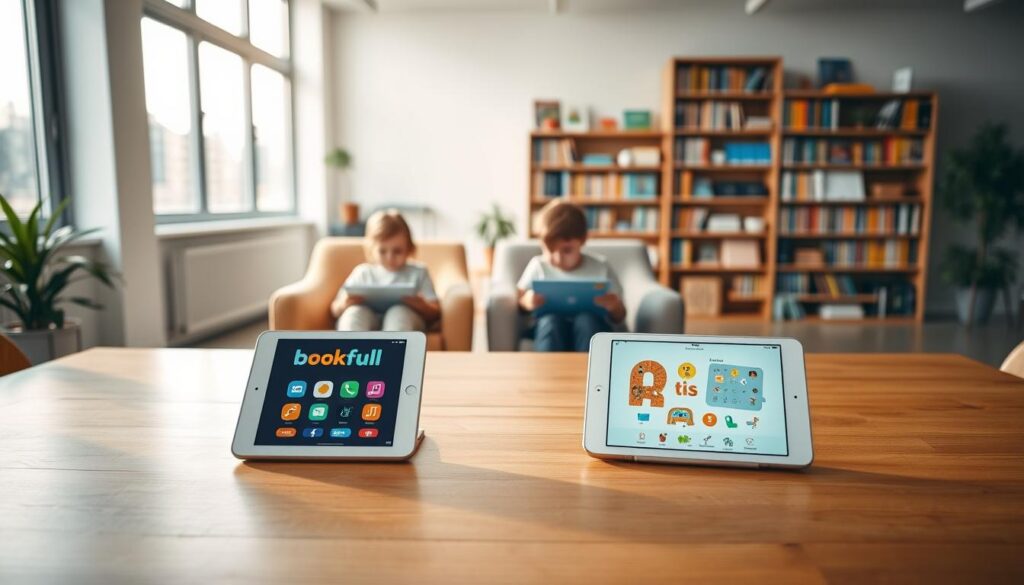
Conclusion: Making the Right Choice for Your Family
The decision between Bookful’s AR-enhanced experience and Lunesia’s interactive narratives hinges on understanding your child’s learning style and interests. As a parent, I’ve learned that the best app is the one your child will actually use consistently. I recommend starting with the free options from both apps to see which one captures your child’s imagination before investing in additional titles or subscription plans.
Remember, digital reading tools should complement, not replace, traditional reading experiences. I’ve found success using these apps as “gateway books” that lead my reluctant reader to pick up physical books on similar topics. Consider making your chosen app part of your family reading routine to create meaningful connections and discussions.
For more insights on children’s storytelling trends, visit https://lunesia.app/childrens-storytelling-trends-2025/. To understand the debate between bedtime stories apps and traditional books, check out https://lunesia.app/bedtime-stories-app-vs-book/. Ultimately, the goal is to foster a love of stories and build essential literacy skills in a way that resonates with your child’s individual interests and learning style.
FAQ
What type of content can I expect to find in digital reading apps like Bookful or Lunesia?
You can expect to find a variety of engaging stories, interactive games, and educational content designed to promote reading skills and a love for literature in children.
Are these apps suitable for children of all ages?
Both apps cater to a range of age groups, but it’s essential to review the content and features to ensure they align with your child’s age and reading skills.
How do I control the type of content my child accesses within the app?
Most digital reading apps, including Bookful and Lunesia, offer parental controls that allow you to filter content, set reading goals, and monitor your child’s progress.
Can I track my child’s reading progress and skills development?
Yes, both apps provide features that enable you to track your child’s reading progress, identify areas for improvement, and adjust their reading experience accordingly.
Do these apps require an internet connection to function?
While some features may require an internet connection, many digital reading apps allow you to download content for offline reading, making it accessible anywhere, anytime.
How do I ensure my child’s personal information is protected within the app?
Reputable digital reading apps like Bookful and Lunesia prioritize user data protection and comply with relevant regulations to safeguard your child’s personal information.
Can I customize the reading experience to suit my child’s interests?
Yes, many digital reading apps offer customization options, such as adjustable reading levels, font sizes, and background music, to create a personalized reading experience for your child.
Are there any additional costs associated with using these apps beyond the initial download or subscription?
Some apps may offer in-app purchases for additional content or premium features, so it’s essential to review the pricing structure and understand any potential extra costs.
